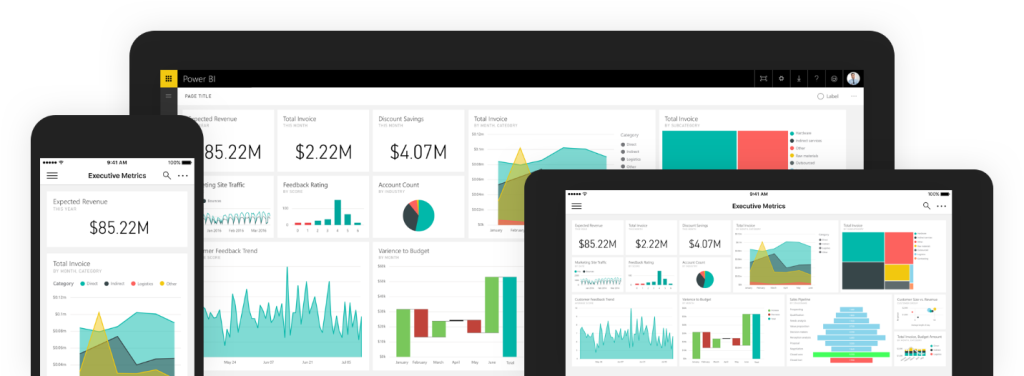In July 2016, Microsoft introduced Power BI, a tool that enabled the users to perform self-service data analysis (a lot of people say that it allows anyone to become a business analyst). Power BI, since then, is increasingly being used by enterprises. It allows users to work on interactive visualizations, create reports and dashboards (with just a few drags and drops), and easily handle fairly large Excel files. The benefits of Power BI don’t end here. It can deal with a number of data types like Excel, Access, CSV, and data from Salesforce, Google Analytics, GitHub, MailChimp and others (it can connect to as many as 60 data sources).
Image Source: https://tr1.cbsistatic.com/hub/i/2016/11/28/4b37f0c4-70d7-4147-9381-d0b7722698a3/featurepowerbi.png
If you’re not familiar with Power BI, here is our take on what it is.
Power BI is a set of data visualization tools that empowers users to transform collected data into actionable information for decision makers.
It’s a set of tools and a cloud service that allows data to be analyzed and visualizations to be presented on dashboards and report sharing that are in the cloud. It comes with a free and paid version too (which offers 10 GB storage for $9.99/month as compared to 1 GB with the free version). Power BI also has free mobile apps that a user can only use in case of a Power BI cloud account or access to the SQL server of your organization.
If we were to sum up the capabilities of Power BI, we’d say the following:
- Ability to create rich and interactive reports
- Insight driven visualization of data in new and interesting ways
- The direct query protocol helps to keep data updated and helps provide real insights
- Ability to connect application to any cloud data source
- High level security with proper authentication and authorization
You can start using Power BI straight away with the free trial version. Office 365 users already have access to it as part of the general suite of applications.
With Power BI Premium, You’ve Got Options
The subscription to Power BI Premium gives you exclusive access to it for a single organization instead of shared cloud that is open for multiple organizations. Enterprises, with the premium subscription, are able to get more flexibility with deployment as per a team or a department.
Microsoft also offers on-premises deployment for enterprises that wish to keep Power BI within the organization. It is possible to share interactive Power BI reports with the help of on-premises Power BI server. It is easier to distribute information across an enterprise, even if the data has to stay behind a company firewall.
As per a Forbes’ post, “Power BI Premium advances how Power BI content is embedded in apps by converging Power BI Embedded with the Power BI service. Customers, partners and the broad developer community can take advantage of one API surface, a consistent set of capabilities and access to the latest features with Power BI Premium,” said Microsoft’s Phillips.
New features in Power BI
It’s no surprise that the new features in Power BI are related to Machine Learning. In the future, data analysts will be able to question (looking at the visualizations) about why a certain number trended at a particular time, add and get all possible explanations and be a complete package for graphical analysis. In the coming days, intelligent chatbots will allow deeper integrations with Microsoft’s Cortana virtual assistant in Windows 10.
If you wish to leverage Power BI within your organization, speak to one of our experts today.




